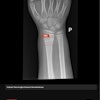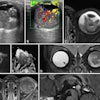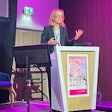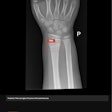
AMSTERDAM - Use of coronary CT angiography (CCTA) does not increase the rate of subsequent invasive coronary angiography and does increase coronary revascularization in patients presenting to the emergency department with chest pain -- while also saving money, according to a poster at the European Society of Cardiology (ESC) congress.
Lead author Dr. Fabrizio D'Ascenzo, a cardiologist from the University of Turin, Italy, on 3 September presented a meta-analysis of randomized clinical trials that assessed strategies to determine coronary artery disease (CAD) in patients admitted to the emergency department with chest pain.
D'Ascenzo explained that the aim of the analysis was to better understand under which circumstances emergency patients could be safely discharged with minimal risk of acute coronary syndrome.
"This is a challenge because angiography is invasive and is associated with a risk of stroke in approximately one in 1,000 patients, while noninvasive procedures [scintigraphy or stress test] have rates of false negatives up to 20% according to pretest probability," D'Ascenzo told AuntMinnieEurope.com in an interview.
High negative predictive value
In contrast to invasive coronary angiography, CCTA is a noninvasive test with a negative predictive value of almost 100% for detecting coronary artery stenosis.
According to D'Ascenzo, upon entering the emergency department with chest pain, patients may undergo an ergometric stress test or scintigraphy, show no coronary disease, and then be discharged.
"But because these can produce false-negative results, patients may have a missed diagnosis of CAD," he said. "On the contrary, because CCTA examines all the main coronary vessels, it does not cause false-negative results."
 Dr. Fabrizio D'Ascenzo from the University of Turin.
Dr. Fabrizio D'Ascenzo from the University of Turin.
Explaining the rationale for the analysis, D'Ascenzo said that many clinicians take a cautious approach to patients who do not display active cardiac ischemia, and admit them to hospital. While this may reduce diagnostic errors, it is time-consuming and expensive, costing up to 7.6 billion euros to 9.12 billion euros ($10 billion to $12 billion) annually in the U.S. alone. Yet, 2% to 5% of time-sensitive cases of acute coronary syndrome are still missed and underdiagnosed.
The meta-analysis by D'Ascenzo and colleagues evaluated four clinical trials including a total of 2,567 patients who were admitted to the emergency department with low- and intermediate-risk chest pain. The patients had a negative electrocardiogram (ECG) and no raised cardiac biomarkers of damage (troponin).
"In these patients, it is difficult to predict which patients will go on to develop coronary artery disease," he pointed out.
The study's primary outcomes were safety as measured by rates of invasive coronary angiography (percutaneous and surgical) and of successful revascularization during the initial visit to hospital. Meanwhile, secondary outcomes that measured CCTA's efficacy included time to diagnosis, rates of direct discharge from the emergency department, and costs of emergency department care.
The researchers found that CCTA was associated with more coronary stenting, with an odds ratio (OR) of 1.88 (95% confidence interval [CI]: 1.21-2.92), which is perceived to be beneficial due to the less invasive nature of stenting compared to more interventional therapy.
"This is clearly better for the patient and the hospital," D'Ascenzo said.
They also discovered that the rate of invasive coronary angiography subsequent to CCTA increased 35% during the initial visit; however, the change was not statistically significant (OR, 1.35; 95% CI: 0.93-1.97).
In secondary findings, time to diagnosis was reduced by eight hours (7.68 hours, 95% CI: -12.7 to -2.66) if the CCTA procedure was used, compared with other methods.
"In my hospital, a patient could be admitted with chest pain in the afternoon, and he would remain in hospital until the following day to complete ergometric tests. But if we use a CCTA scan that is negative, then the patient would be discharged the same evening," remarked D'Ascenzo.
Furthermore, costs were reduced by approximately 32%, or 517 euros ($680), when CCTA was used, compared with costs associated with stress testing and/or scintigraphy.
The analysis also examined readmission rates for patients who underwent CCTA versus those who underwent stress testing or scintigraphy. The researchers found that if a patient is safely discharged with a negative CCTA scan, that patient has the same likelihood of returning as one who underwent a stress test or scintigraphy.
Reflecting on future use of CCTA, D'Ascenzo said he believes the modality will be used more widely and in particular for the diagnosis of stable chest pain. However, he pointed out that the most difficult issue is knowing which patients are the most suitable candidates for CCTA.
"Older patients, for example, might have calcifications in the vessels, and this can cause misdiagnosis of stenosis," he said.



















